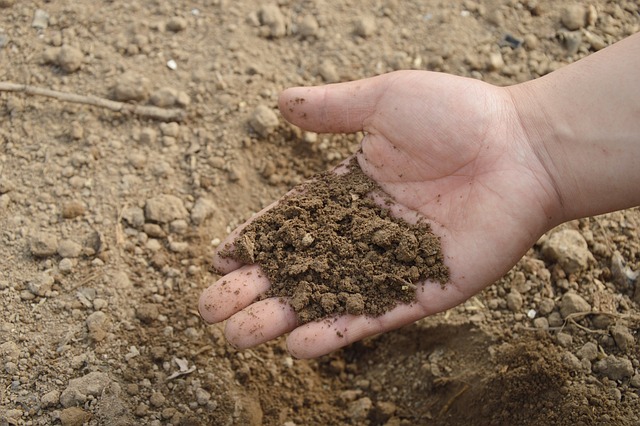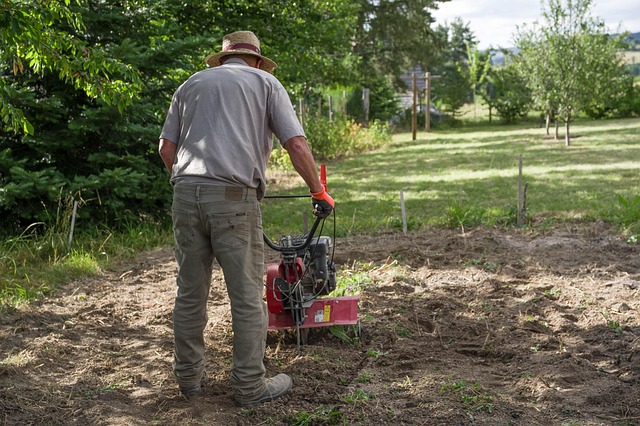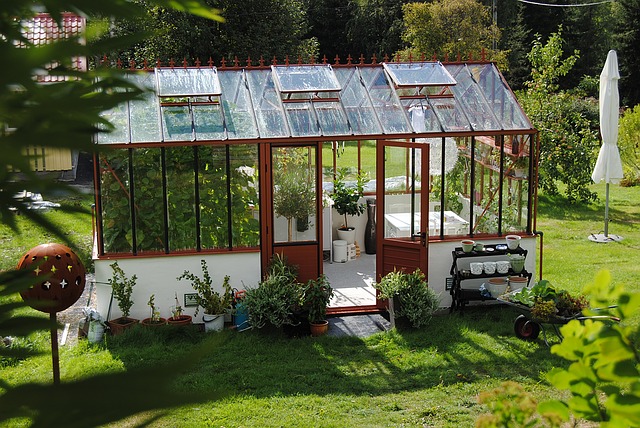Preparing Your Backyard Vegetable Garden for Spring
Spring is the perfect time to start fresh and prepare your vegetable garden for the upcoming growing season. A well-prepared garden ensures strong, healthy plants and a more abundant harvest. Let’s dive into the essential steps for getting your backyard garden ready.
Assessing Your Garden Space
Evaluating Sunlight and Shade
Before you start planting, take note of how much sunlight your garden receives. Most vegetables need at least 6-8 hours of direct sunlight daily to thrive. If your space has shady areas, consider planting leafy greens like spinach or lettuce that tolerate lower light conditions.
Checking Soil Quality and Drainage
Good soil is the foundation of a productive garden. If your soil retains too much water, you may need to amend it with sand or organic matter to improve drainage. On the other hand, if water drains too quickly, adding compost can help retain moisture.
Cleaning and Clearing the Garden Bed
Removing Weeds and Debris
Start by clearing out any weeds, old plant debris, and fallen leaves. These can harbor pests and diseases that could affect your new plants. Pull weeds by the root to prevent regrowth and dispose of diseased plant material away from your garden.
Rotating Crops to Maintain Soil Health
Crop rotation helps prevent soil depletion and reduces the risk of disease buildup. If you planted tomatoes in one spot last year, switch it up by planting beans or carrots instead. This practice keeps your soil healthy and balanced.

Testing and Amending Soil
Conducting a Soil Test
Testing your soil before planting helps you determine its nutrient levels and pH balance. You can purchase a soil test kit or send a sample to your local agricultural extension office for a detailed analysis.
Adding Organic Matter and Compost
Healthy soil needs organic matter to support plant growth. Mix in well-rotted compost, aged manure, or worm castings to enrich the soil with essential nutrients. This also improves soil structure and microbial activity.
Adjusting Soil pH and Nutrients
Most vegetables thrive in soil with a pH between 6.0 and 7.0. If your soil is too acidic, add lime to raise the pH. If it’s too alkaline, sulfur or peat moss can help lower it.
Planning Your Garden Layout
Choosing the Right Vegetables for Spring
Not all vegetables grow well in spring. Some of the best choices include:
- Leafy greens: Lettuce, spinach, kale
- Root vegetables: Carrots, radishes, beets
- Legumes: Peas, beans
- Cruciferous veggies: Broccoli, cabbage
Companion Planting Strategies
Companion planting helps improve growth and repel pests. Some classic pairings include:
- Tomatoes and basil (Basil enhances tomato flavor and repels pests)
- Carrots and onions (Onions deter carrot flies)
- Cucumbers and radishes (Radishes repel cucumber beetles)
Starting Seeds Indoors
Benefits of Indoor Seed Starting
Starting seeds indoors gives your plants a head start and extends the growing season. It also helps protect young seedlings from unpredictable spring weather.
Best Vegetables to Start Indoors
- Tomatoes
- Peppers
- Eggplants
- Broccoli
- Cauliflower
Transplanting Seedlings to the Garden
Once seedlings develop two or more true leaves, they’re ready to be transplanted. Harden them off by gradually exposing them to outdoor conditions before planting them in the garden.
Direct Sowing Seeds in the Garden
Best Vegetables for Direct Sowing
Some crops do better when sown directly into the soil:
- Carrots
- Radishes
- Peas
- Lettuce
- Spinach
Proper Spacing and Depth for Planting
Each vegetable has different spacing needs. For example:
- Carrots: 2-3 inches apart
- Lettuce: 6-8 inches apart
- Peas: 1-2 inches apart
Plant seeds at twice the depth of their size for optimal germination.
Mulching and Weed Control
Choosing the Right Mulch
Mulching is essential for conserving moisture, suppressing weeds, and improving soil health. The best mulch options for vegetable gardens include:
- Straw or hay: Lightweight and easy to spread
- Shredded leaves: Free and rich in nutrients
- Grass clippings: Provides nitrogen but should be used in thin layers
- Wood chips: Best for pathways, but not ideal for vegetable beds
Preventing Weed Growth Naturally
Weeds compete with your vegetables for nutrients and water. To keep them under control:
- Apply a thick layer of mulch (2-3 inches)
- Use landscape fabric in high-weed areas
- Pull weeds while they are small to prevent them from spreading
- Plant ground cover crops, like clover or rye, to block weed growth
Setting Up Irrigation and Watering Systems
Drip Irrigation vs. Hand Watering
Watering is crucial for plant health, but overwatering can be just as harmful as under-watering. Consider these options:
- Drip irrigation: Slowly delivers water directly to the roots, reducing waste
- Soaker hoses: Similar to drip irrigation but more affordable
- Hand watering: Best for small gardens but time-consuming
Best Times to Water Your Garden
- Morning (before 10 AM): Ideal time as it reduces evaporation
- Late afternoon (after 4 PM): Works well but leaves plants slightly damp overnight, which can increase disease risk
Water deeply and less frequently to encourage strong root growth.
Building Support Structures for Climbing Plants
Trellises and Stakes
If you’re growing vining plants, they will need support to grow properly. Options include:
- Trellises: Best for peas, cucumbers, and beans
- Stakes: Ideal for tomatoes and peppers
- Arches: Aesthetic and functional for plants like squash and gourds
Cages for Tomatoes and Peppers
Tomato cages provide stability for heavy fruit-bearing plants. For best results:
- Use sturdy metal cages for larger tomato varieties
- Install cages early to avoid damaging roots later
Protecting Your Garden from Pests and Diseases
Natural Pest Control Methods
Keeping pests away without chemicals is possible with these methods:
- Encourage beneficial insects (ladybugs, praying mantises)
- Use row covers to shield young plants
- Spray neem oil or insecticidal soap to deter aphids and mites
- Plant pest-repelling flowers, like marigolds and nasturtiums
Common Garden Pests in Spring
Watch out for these common culprits:
- Aphids: Tiny bugs that suck plant sap
- Slugs and snails: Eat leaves and seedlings
- Cabbage worms: Target broccoli, cabbage, and kale
Regularly inspect your plants to catch infestations early.
Fertilizing Your Plants Properly
Choosing Organic vs. Synthetic Fertilizers
- Organic fertilizers (compost, fish emulsion, manure) improve soil health over time
- Synthetic fertilizers provide quick nutrients but may deplete soil long-term
When and How to Apply Fertilizers
- Before planting: Mix compost or manure into the soil
- During the growing season: Use liquid fertilizers every 2-3 weeks
- For fruiting plants: Increase phosphorus and potassium when flowers appear
Encouraging Pollinators in Your Garden
Best Flowers to Attract Bees and Butterflies
Pollinators increase your vegetable yield. Some great flowers to plant include:
- Lavender
- Sunflowers
- Borage
- Echinacea
Setting Up a Bee-Friendly Environment
- Avoid pesticides that harm bees
- Provide a shallow water source for pollinators
- Include a variety of blooming plants to attract different insects
Maintaining Your Garden Throughout the Season
Regular Pruning and Maintenance
- Pinch off dead leaves to promote healthy growth
- Trim tomato suckers for better fruit production
- Check trellises and supports for stability
Identifying Early Signs of Disease
Common vegetable diseases include:
- Powdery mildew (white spots on leaves)
- Blight (yellowing and wilting of plants)
- Root rot (caused by overwatering)
Remove infected plants immediately to prevent spreading.
Conclusion and Final Tips
Preparing your backyard vegetable garden for spring takes planning and effort, but the rewards are well worth it. From testing your soil to setting up irrigation and protecting against pests, every step contributes to a productive and healthy garden. Start early, stay consistent, and soon, you’ll be harvesting fresh vegetables right from your backyard!
FAQs
1. When should I start preparing my garden for spring?
Start prepping your garden about 4-6 weeks before your last frost date.
2. What is the best mulch for a vegetable garden?
Straw, shredded leaves, and compost are excellent choices as they retain moisture and improve soil quality.
3. How often should I water my vegetable garden?
Most vegetables need 1-2 inches of water per week, but this varies based on weather and soil type.
4. Can I plant vegetables before the last frost?
Yes! Cold-hardy crops like lettuce, kale, and peas can be planted before the last frost.
5. What vegetables are easiest to grow for beginners?
Easy-to-grow vegetables include radishes, lettuce, green beans, zucchini, and cherry tomatoes.

